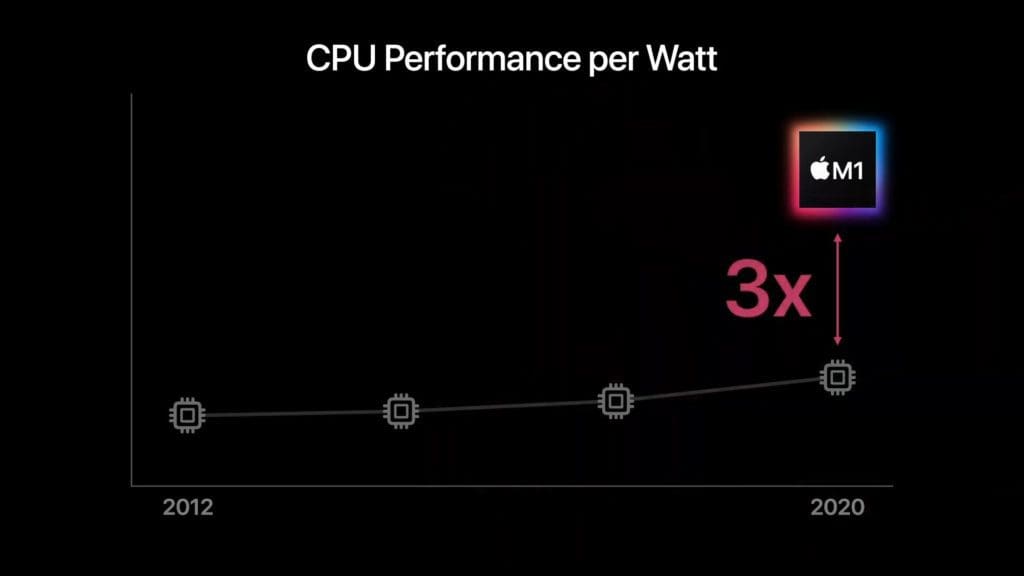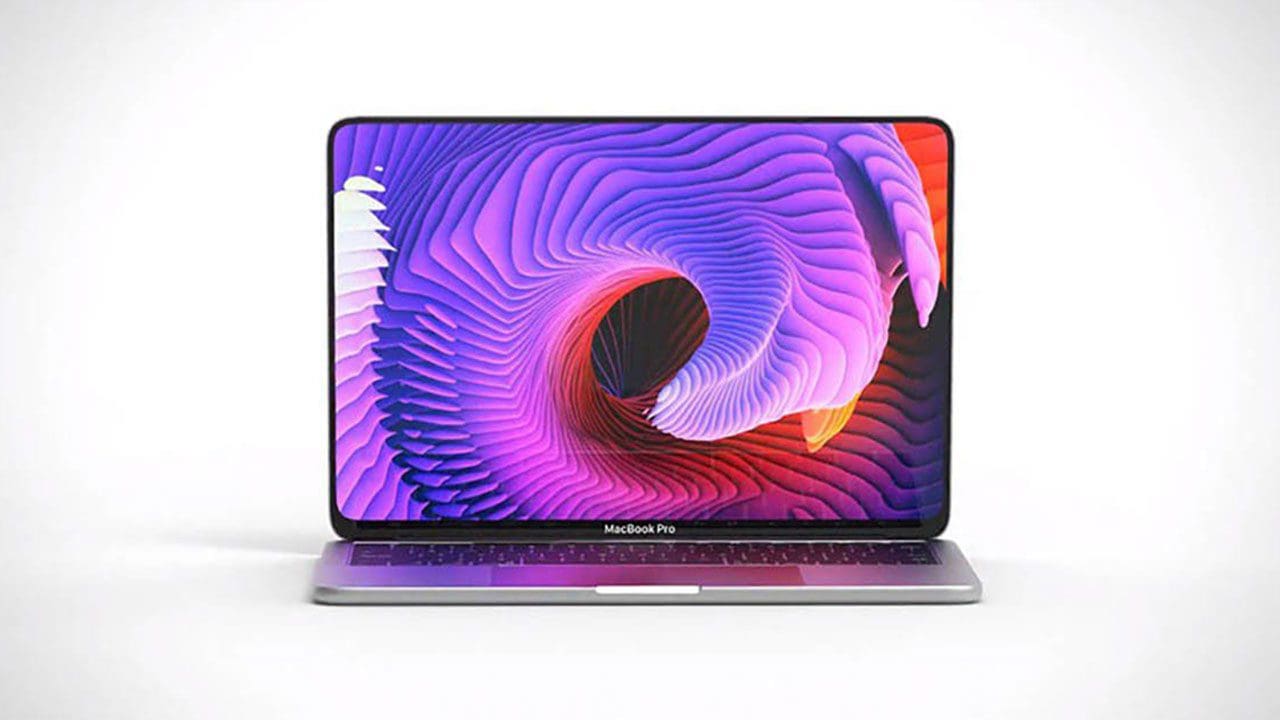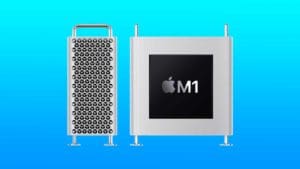Apple is scrambling to update their entire Mac lineup, and we’ve only just seen the beginning. This begs the question, what’s next?
An intro to Apple Silicon (M1X, M2 and beyond)
The M1 chip was released back in late 2020, and has gone to appear in a newly reshaped Apple product stack, featuring in the new iMac, MacBook Air, MacBook Pro, and in the new iPad Pro.
This extension of the Apple silicon architecture (with this current generation including the S5, A14/A14 Bionic, M1 and the rumoured M1X).
These follow the standard ARM big.LITTLE arrangement. It is most likely that a newer higher performance chip will be released later this year at the traditional Apple launch event, with it being rumoured to appear in new 14 inch and 16 inch MacBook Pros, and a 27 inch iMac.
Although there hasn’t been any official announcement by Apple themselves about the existence, or naming convention of this new, high performance chip, there has been multiple leaks suggesting both this, and the introduction of the 14 inch MacBook Pro during the traditional Apple Launch event that occurs every year.
Apple made many, very bold claims about the M1 chip, with it not living completely up to the hype that was generated with it’s release, although it was enough to disrupt the otherwise stable laptop market.
It is undeniably more powerful than the Intel SoCs that were previously used, and allows for Apple to have even tighter control of their already small product stack. This of course allows for better optimisation on a hardware and software level, and as it is an extension of the already existing architecture, potential support for true cross platform applications (a vision that Apple has had for many years now).
With the M1X chip, you should be able to see similar performance gains to what was created with M1. The mix of performance and power efficient cores allows for a balance between raw power for a few processes, or short bursts, while being able to rely on the leaner cores for more sedentary tasks to save power.
The new M1X SoC will definitely feature Thunderbolt support (and USB4), and may have support for DDR5 (or use DDR4X). The M1X may take advantage of PCIe 4.0, which will allow for faster storage support, and possibly the presence of a beefy discrete GPU in the 16 inch models.
M2 on the other hand is planned to be a different beast, acting more with the continual architectural improvements that come with every new generation of CPU. This improvement would be similar to that found in AMD and Intel CPUs.
General improvements to the IPC and architecture of the silicon can average to have relatively tame improvements (usually ranging either in the single digits, or low double digits percentage wise).
Price?


As seen in the M1 chip, it is speculated that Apple will have different ‘tiers’ of CPU, possibly having varying amounts of CPU/GPU cores or having a higher TDP (therefore having better peak performance).
This system will probably be similar to that which Intel and AMD, by having lower binned silicon (i.e. silicon that is unable to perform as well as other silicon), make their way into higher end CPUs that can handle higher voltages at higher clock speeds.
With M1X, there is a possibility that it will have more than just 2 processor options, and have a distinctly tiered system, a bit like AMD’s Ryzen 3, 5, 7 and 9; and Intel’s Core i3, i5, i7 and i9 chips.
Just like how the M1 chip didn’t bring down the prices significantly of the new iMac, 13-inch MacBook Pro/Air, or Mac Mini models, it wouldn’t make sense for Apple to make a large different in price for their higher end products.
This would probably (like how it is currently with Intel) be affected mainly by the hardware that is inside the machine (including RAM, storage and most importantly the CPU and GPU combo). If Apple’s current trends are to continue, it is almost certain that these machines will stay out of reach for the average consumer, but still continue to be a great investment for those who can access it.
M2 however will probably stick with the same pricing of the M1 powered machines, and allow for the machines equipped with it to have a healthy spec boost.
Performance?


Apple made some very bold claims about the M1 chip when it was to be released, of which not all of it was met (at least in performance). The M1 chip still remained to be a crowd-pleaser, being surprisingly powerful and the efficient nature of ARM showing with the impressive battery life.
These chips are built on the same architecture as Apple’s other in-house silicon, mainly being the S5 (as found in Apple Watches and HomePod products), the A14/A14 Bionic (as found in the iPad Air and iPhone 12 series).
M1 was just an extension on the A14 Bionic chip, doubling the performance by effectively doubling the TDP and doubling the performance cores (up from 6W to 14W, and up from 2 performance cores to 4).
M1X, as leaked by LeaksApplePro would most likely have a further doubling of performance cores and TDP, and therefore have an effective ‘doubling’ in performance. It is difficult to say if the architecture is able to hold a linear performance metric, and ARM is rarely pushed this far in the first place.
From this, I am also able to predict the performance of the M2 chip by adding the average generation improvement (being about 5-8%), without a significant change in the core layout or TDP of the processor.
Table of Performance
| SoC Name | TDP | Core count (total) | Core count (performance) | Core count (power efficient) | Geekbench 5 Single-core | Geekbench 5 Multi-core |
| A14 Bionic | 6W | 6 | 2 | 4 | 1612 | 3901 |
| M1 | 14W | 8 | 4 | 4 | 1756 | 7716 |
| M1X (estimate) | 30W | 12 | 8 | 4 | 2107 | 15432 |
| M2 (estimate) | 14W | 8 | 4 | 4 | 1850 | 8463 |
Is it worth it?
If you are able to, I would recommend holding out for the new MacBook Pros especially if you are in the market for a new high end Apple computer.
The current 2020 intel-powered 16 inch MacBook Pro does not make much sense with a new renaissance of Apple Silicon being only just over the horizon. I would also recommend waiting for M2 to release, as it should bring improvements on SoC issues, such as storage failure and swap usage on an IPC level.
This will likely bring a welcome upgrade, and potentially new additions to the Apple product stack, and can allow for people to have better access to what they would most benefit from.





